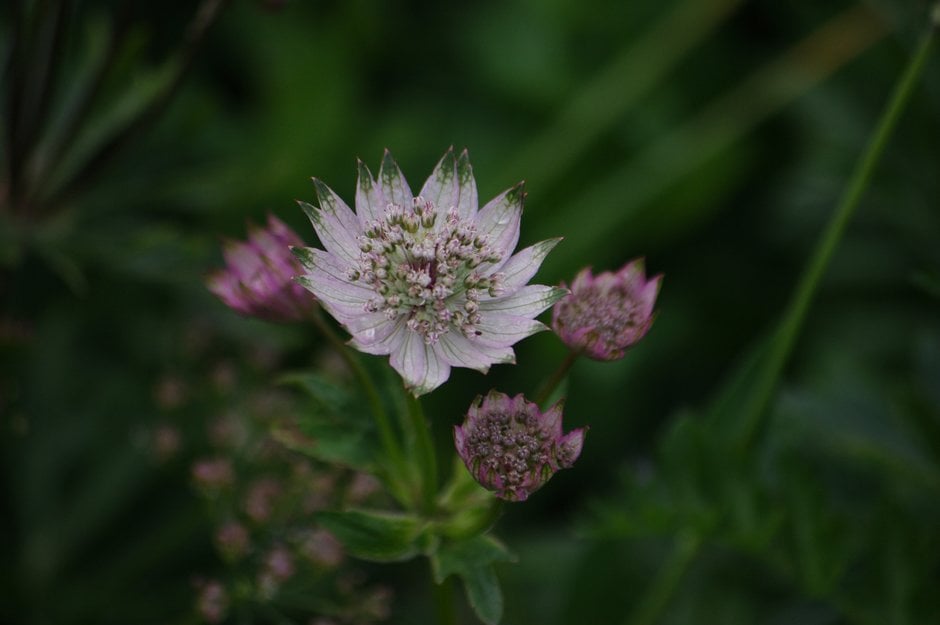Astrantia minor
small black masterwort
A clump-forming perennial to around 30cm tall with palmate basal leaves divided into seven to nine lanceolate, coarsely-toothed leaflets. Small white to pale pink flowerheads up to around 2cm across are borne singly or in twos or threes on slender stems in summer

Size
Ultimate height
0.1–0.5 metresTime to ultimate height
2–5 yearsUltimate spread
0.1–0.5 metresGrowing conditions
Moisture
Well–drainedpH
Acid, NeutralColour & scent
| Stem | Flower | Foliage | Fruit | |
| Spring | Green | |||
|---|---|---|---|---|
| Summer | Green Pink White | Green | ||
| Autumn | Green | |||
| Winter |
Position
- Full sun
- Partial shade
Aspect
West–facing or East–facing or South–facing
Exposure
Exposed or Sheltered Hardiness
H7Botanical details
- Family
- Apiaceae
- Native to GB / Ireland
- No
- Foliage
- Deciduous
- Habit
- Clump forming
- Genus
Astrantia are clump-forming herbaceous perennials with palmately lobed basal leaves and branched, erect, wiry stems bearing compact umbels of tiny flowers surrounded by a rosette of showy bracts
- Name status
Unresolved
How to grow
Cultivation
Best grown in moist, fertile, humus-rich soil in sun or partial shade but will tolerate drier conditions
Propagation
Propagate by seed sown in pots in a cold frame as soon as seed is ripe or propagate by division in spring
Suggested planting locations and garden types
- Cottage and informal garden
- Gravel garden
- Wildlife gardens
- Flower borders and beds
Pruning
Deadhead before seed is ripe to prevent self-seeding
Pests
May be susceptible to astrantia leaf miner
Diseases
May be susceptible to powdery mildews
Get involved
The Royal Horticultural Society is the UK’s leading gardening charity. We aim to enrich everyone’s life through plants, and make the UK a greener and more beautiful place.